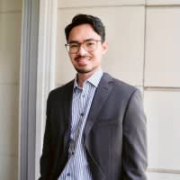

Pega Platform and KiSSFLOW are competitors in workflow automation, with Pega having the edge for enterprise-level scalability and advanced functionalities, while KiSSFLOW is favored for simplicity and ease of use.
Features: Pega Platform excels in workflow automation, case management, and seamless enterprise integration, with deployment options like Pega Cloud and Pega BPM. It has advanced digital process capabilities and a highly effective no-code environment. KiSSFLOW is noted for its simplicity, API integration, and enabling non-IT users to swiftly create workflows, making it user-friendly and accessible.
Room for Improvement: Pega Platform users experience UI complexity and integration challenges, with calls for enhanced AI features, better scalability, and improved technical support. KiSSFLOW users seek better UI customization and smoother integration capabilities, with a focus on stability and form integrations.
Ease of Deployment and Customer Service: Pega provides versatile deployment options including on-premises, public cloud, and hybrid cloud. However, technical support is mixed and can be slow for complex issues. KiSSFLOW focuses on ease of use with deployment primarily on public and private clouds and offers moderate technical support.
Pricing and ROI: Pega's licensing is generally higher, based on user and case complexity, suitable for larger enterprises, and offers significant ROI through efficiency and reduced handling times. KiSSFLOW is more affordable with straightforward pricing, focusing on simplicity and fast deployment, making it cost-effective for smaller businesses.
The technical support from Pega is very low, rating a one or two out of ten.
I never needed support from the platform standpoint, but if additional features are required, we have regular meetings with the product team for feedback.
Pega's technical support team is very helpful.
Currently, big banking providers and insurance providers, even the members for healthcare payers, are using more than millions of operations on a daily or weekly basis.
With the recent development of AI agents in Pega Platform 24.2, the adoption is not heavy due to regulations around using external LLM by customers, especially regulated customers in BFSS and healthcare.
Pega introduced Constellation, which allows a user to build a more engaging visual experience.
My learning curve in robotics has been challenging.
Pega is priced higher than open-source options like Flowable but is suitable for large-scale industries like banking and insurance.
The pricing is expensive, and this is an issue.
From a licensing perspective, it is higher than the competition.
Management capabilities such as dashboards.
Pega Platform is excellent for enterprise-level solutions with integrations to entire systems, including case management, service orchestration, CRM, decision-making capabilities, digital process automation, and AI-driven functionalities.
| Product | Market Share (%) |
|---|---|
| Pega Platform | 4.4% |
| KiSSFLOW | 0.7% |
| Other | 94.9% |


| Company Size | Count |
|---|---|
| Small Business | 4 |
| Midsize Enterprise | 3 |
| Large Enterprise | 6 |
| Company Size | Count |
|---|---|
| Small Business | 9 |
| Midsize Enterprise | 15 |
| Large Enterprise | 69 |
Pega Platform provides flexible business process management with a focus on rapid application development and automation through a low-code approach, enhancing efficiency across sectors.
Pega Platform is renowned for its ability to streamline operations with robust automation features, including robotic process automation and decision-making capabilities. Its intuitive interface and workflow management contribute to a reputation for enhancing business processes. Although users face challenges with integration limitations and high licensing costs, they benefit from rapid deployment and efficient process adaptations. The unified architecture reduces complexity, while case management and integration services support digital transformations in sectors such as banking, insurance, and healthcare.
What are the key features of Pega Platform?
What benefits and ROI should users expect?
In industries like insurance, banking, healthcare, and government, Pega Platform is implemented to automate diverse workflows, supporting initiatives from claims processing to customer onboarding. Enterprises use Pega for case management and digital transformations, valuing its out-of-the-box integrations and real-time reporting capabilities to boost operational automation and enhance customer experiences.
We monitor all Business Process Management (BPM) reviews to prevent fraudulent reviews and keep review quality high. We do not post reviews by company employees or direct competitors. We validate each review for authenticity via cross-reference with LinkedIn, and personal follow-up with the reviewer when necessary.